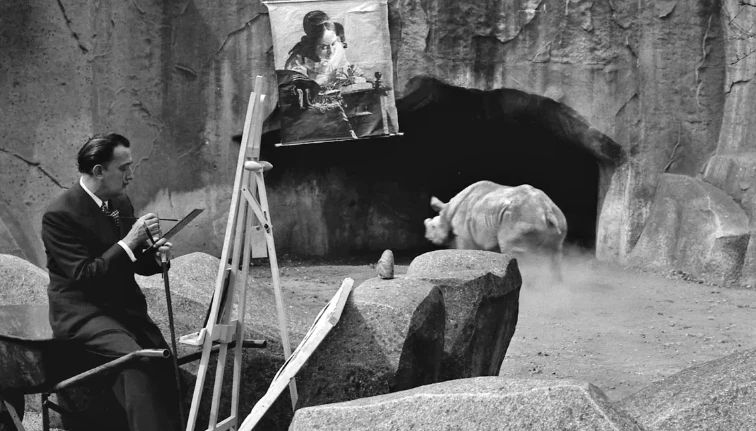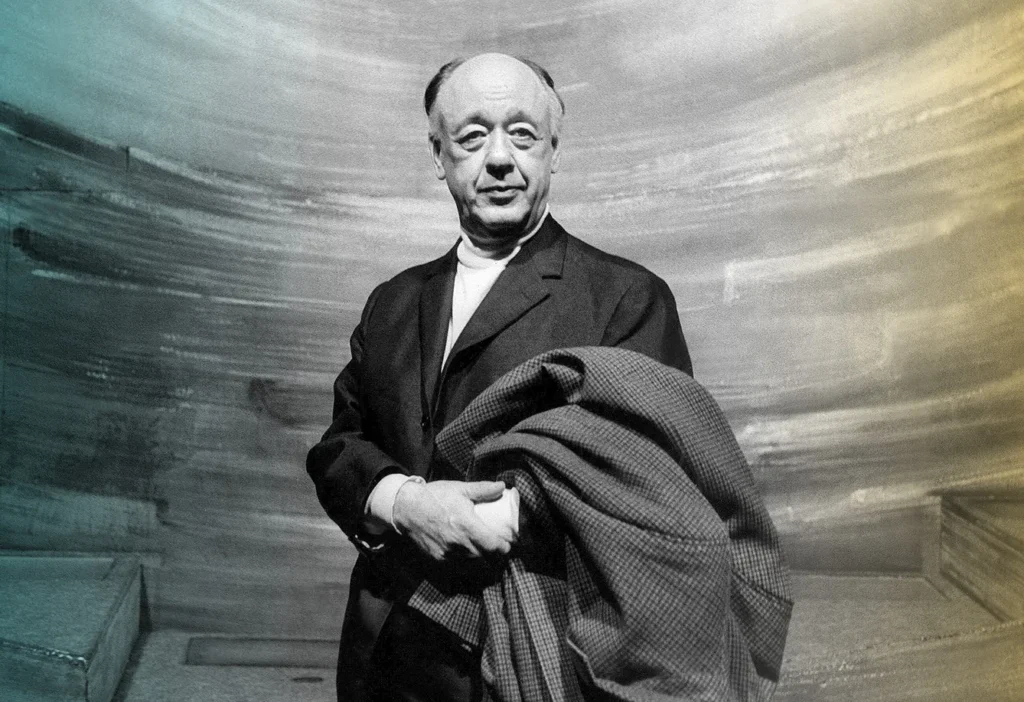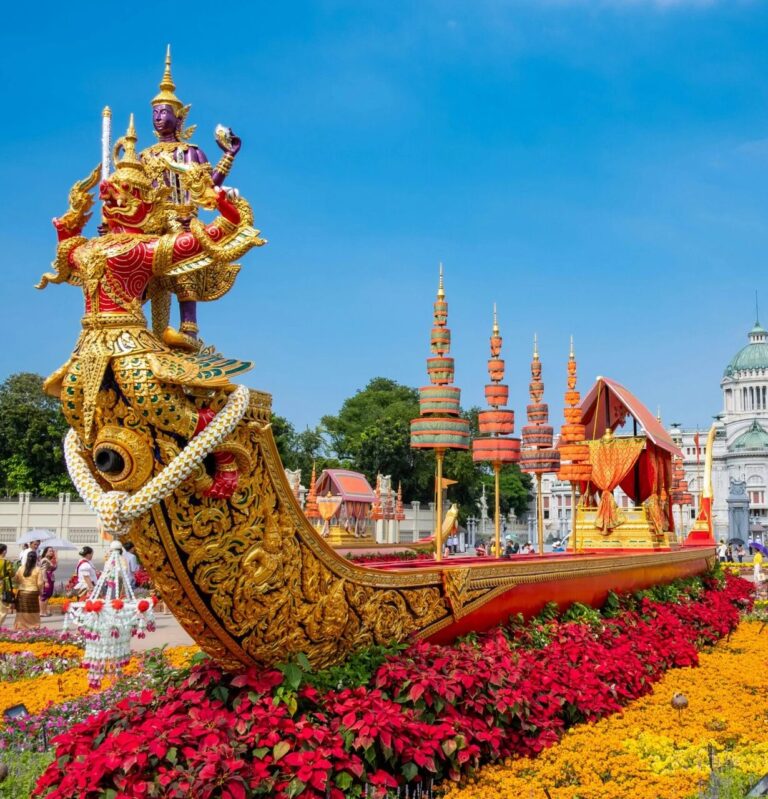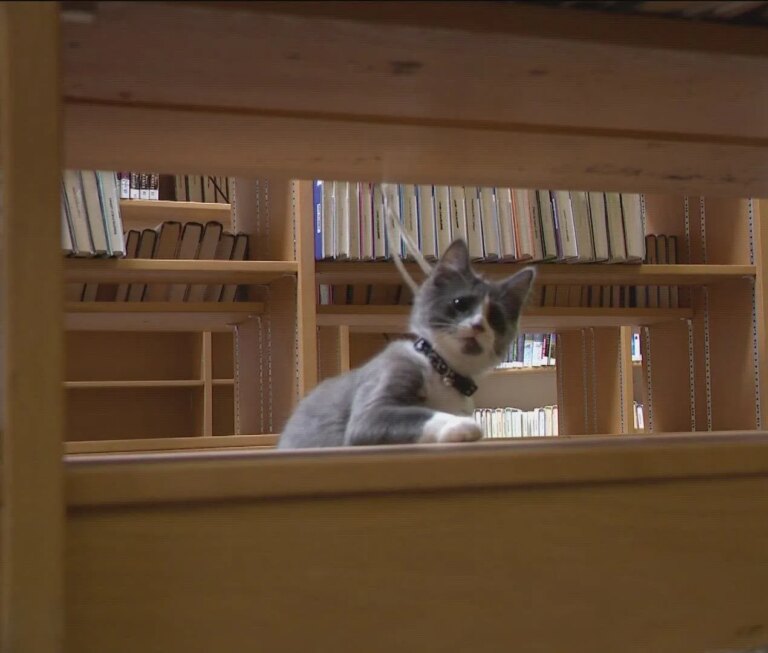Once described as serene Buddha meets mischievous Hitchcock, Eugene Ionesco was considered the Godfather of the absurd. Join us as we look back on his life and accomplishments.
Eugene Ionesco was a Romanian-born playwright who was considered the godfather of the theater of the absurd, though he preferred the tag “improbable” versus absurd, with such works as The Rhinoceros, The Bald Soprano, and The Lesson. Ionesco passed away in his Paris home during a post-lunch nap at the age of 81. March 28th will be the 30th anniversary of his death. Today we’re looking back at the life and times of the godfather of the absurd.
Rhinoceros
To fully understand Ionesco’s work and brilliance, it’s important to first understand Rhinoceros. Produced first in France, Germany, England, Poland, and Japan, Rhinoceros made its way to Broadway in 1961, then was made into a film in the early 1970’s. Rhinoceros involves townsfolk in a French village who hear that a Rhino is charging through the streets on an otherwise quiet morning. To show that ordinary people often find it difficult to resist the extraordinary, all of the characters, except the publisher clerk, turn into rhinoceroses.

The play opened in Dusseldorf, Germany in 1959 and received over 50 curtain calls. Since its opening critics have called the play “anti-Hitler”, “anti-Peronist”, “Anti-Communist”, “Anti-Leftist” and more.
“I first thought of the rhinoceros image during the war (World War II), as I watched Romanian statesmen and politicians and later French intellectuals accommodate themselves to Hitler’s way of thinking,” Ionesco said in a 1985 interview. “They might say something like, ‘Well, of course, the Nazis are terrible, terrible people, but you know, you must credit them with their good points. And you wanted to say to them: ‘But don’t you see, if you start granting them a good point here, a good point there, eventually you will concede everything to them.’ Which is exactly what happened.”
Dual-Citizenship
Eugene Ionesco was born in Slatina, Romania, but spent his early childhood in Paris. Upon his return to Romania, a number of colleagues declared their loyalty to Hitler, prompting him to permanently flee to France, becoming a French citizen. In Romania, Ionesco worked as a professor of French, then once he moved to France, he worked for a publishing house. When he decided to transform his views of life into plays, his wife then took on a job at a layers office to help financially support them.

While critics weren’t initially impressed with Ionesco’s first play, The Bald Soprano at first, premiering on May 11th, 1950, word of mouth made ticket sales surge.
Soon, Ionesco was encouraged to devote all of his time to writing plays. “The supreme trick of mass insanity is that it persuades you that the only abnormal person is the one who refuses to join in the madness of others, the one who tries vainly to resist,” he said in a 1983 discussion of Rhinoceros.
Success Reaches the United States
By the early 1950s, Ionesco’s plays were being translated into several languages and being performed worldwide, becoming increasingly popular in the United States. Despite the amount of translating occurring, Ionesco continued to work solely in French. After his only child Marie-France grew up, she began to travel with him and translate through interviews and theatre audience remarks.
“I can only read English,” he said. “I can ask a policeman for directions, but I don’t understand his reply.”

Ionesco often emphasized that he never set out to be a playwright, and in fact, “I would have preferred becoming a saint,” he would say with tongue only slightly in cheek. Ionesco claimed he became a writer because literature seemed, the surest path out of “abhorrent anonymity.” Aside from becoming known worldwide and having to translate his plays into a number of languages, Ionesco was also recognized by way of being the recipient of several awards including entry into the Academie Francaise in 1970, the Ingersoll Foundation’s Annual T.S. Elliot Award for Creative Writing in 1985 and a commendation from the L.A. Theater Alliance in 1983.
Highs and Lows

Something interesting about Ionesco is that he was frequently described as being a “pessoptimist” because he would often swing between amusing, highly optimistic commentary, followed by a truly pessimistic outlook on the world. In his later years, Ionesco would often tell theatergoers, “I love life, in spite of everything. I have in me a life force stronger than despair. I have a good appetite. I love beautiful country.” But critic Martin Esslin often told a different story of an encounter he had backstage with Madame Ionesco:
“Your husband must be a very happy man,” Esslin said to Madame Ionesco.
“Oh, no, monsieur, he is very sad,” she replied, despite the play’s evident success.
“Why would he be sad?” asked an uncomprehending Esslin.
“Because,” she said, revealing the playwright’s fundamental fear, “he is afraid to die.”
The Great Beyond

Ionesco continued to write well into his 70s as well as dabbling in sketching and watercolors. His work did well enough and received enough attention to land him an exhibit in Switzerland. In 1988 he published The Intermittent Quest about his own spiritual quest through writing, paintings, and ultimately everything he did.
“I am, alas, not able to laugh all the time and I very quickly slump back into what constitutes the average of my days: sadness, anxiety, the emptiness of this world where only love and art will have allowed me to survive. What’s anguishing,” he emphasized in an interview, “is to ask myself: ‘Who put me here?’ At the same time, I’m afraid to get out. I don’t know if I’ll find anything on the other side.”
Join our community of 1.5M readers
Like this story? You'll love our free weekly magazine.








